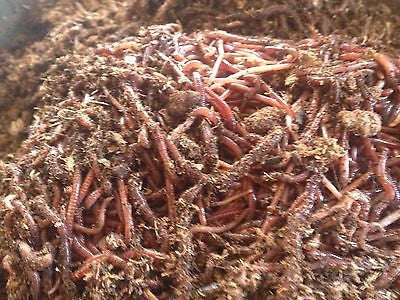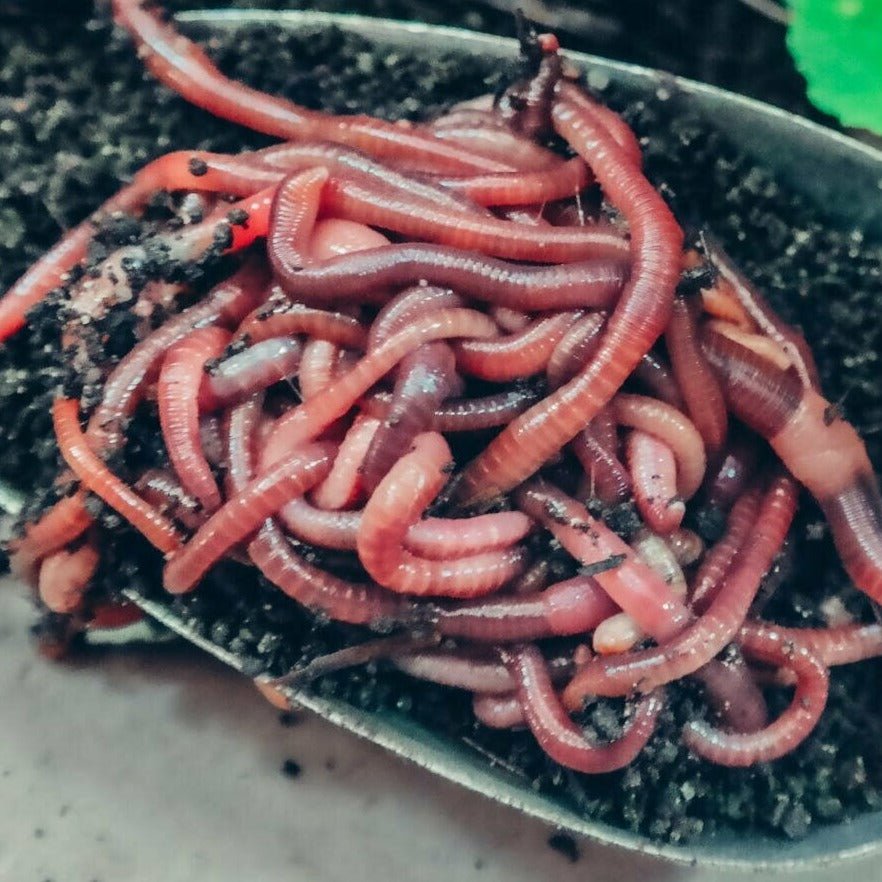Premium High Quality Red Wiggler Worms - Boost Your Yard's Fertility
Premium High Quality Red Wiggler Worms - Boost Your Yard's Fertility
Blog Article
Red Wiggler Worms Demystified: Unlocking the Secrets of Vermiculture for Greener Living and Nutrient-Rich Dirt
In the world of lasting practices for enriching dirt high quality and advertising eco-conscious living, red wiggler worms play an essential yet commonly ignored function. Red Wiggler Worms. Comprehending the complexities of caring for these worms, maximizing their atmosphere, and harnessing their spreadings can lead to a greener way of life and much healthier dirt for plants to prosper.
The Function of Red Wiggler Worms
Red Wiggler worms play an important function in composting systems by efficiently damaging down natural matter into nutrient-rich spreadings. These ravenous eaters eat a selection of natural products, such as kitchen scraps, yard waste, and paper items. As they feed, the worms' digestive system procedures break down the raw material into a fine, dark, and nutrient-dense material referred to as worm spreadings or vermicompost.
The spreadings created by Red Wiggler worms are very valuable for dirt health and plant growth. They are abundant in vital nutrients like nitrogen, phosphorus, and potassium, which are important for supporting healthy and balanced plant development. In addition, worm castings have useful microbes and enzymes that help improve dirt framework, boost water retention, and enhance nutrient uptake by plants.
Benefits of Vermicomposting

It enhances dirt framework, improves soil oygenation, and enhances soil wetness retention. Vermicompost likewise improves the soil with vital nutrients like phosphorus, potassium, and nitrogen, advertising plant development and general dirt fertility.
Additionally, vermicomposting assistances lasting horticulture practices by supplying a all-natural and chemical-free alternative to synthetic fertilizers. Red Wiggler Worms. This eco friendly technique not only enhances the soil but likewise assists minimize reliance on hazardous chemicals, promoting a greener and extra sustainable method of horticulture
Establishing Up a Worm Container
When developing a worm bin for vermicomposting, proper setup is crucial to make certain the success of the composting process. The primary step in establishing a worm container is selecting an ideal container. This can be a plastic bin or wood box that gives enough room for the worms to relocate about and has appropriate water drainage holes to avoid waterlogging. Next off, a bedding product such as shredded newspaper, cardboard, or coconut coir ought to be contributed to the bin. This bedding gives a comfortable setting for the worms and helps maintain moisture degrees.
After adding the bed linen, introduce the red wiggler worms to the bin. The worms should navigate to this website then be given with food scraps such as fruit and veggie peels, coffee grounds, and eggshells.
On a regular basis monitor the dampness degrees and temperature in the worm bin to make certain ideal problems for the worms. With proper setup and maintenance, the worm container will successfully convert organic waste right into nutrient-rich garden compost for your plants and yard.
Harvesting Worm Spreadings
To effectively accumulate nutrient-rich worm spreadings from your vermicomposting system, a methodical harvesting method is essential. When it comes time to collect the worm spreadings, there are a few vital steps to follow to guarantee a successful process. Firstly, quit including fresh food scraps to one side of the worm container for a couple of weeks before collecting. This motivates the worms to move to the side with fresh bedding and food, making it much easier to dig the castings from the opposite side.

Troubleshooting Common Issues
Identifying and dealing with usual challenges that may develop during the vermicomposting process is critical for keeping a healthy and balanced and effective worm container. One common problem that vermicomposters experience is overfeeding. Adding excess food scraps check my site can cause a buildup of dampness and acidity in the worm bin, potentially damaging the worms. To stop this, feed the worms in small amounts, ensuring that the food scraps are adequately broken down before adding much more. One more concern is unpleasant odors emanating from the worm bin. Foul smells indicate anaerobic conditions, typically brought on by overwatering or insufficient ventilation. To fix this, adjust the wetness degrees by including dry bedding products like shredded newspaper or cardboard and boost oygenation by turning the bed linen routinely.
Additionally, if the worm population is declining or the worms appear harmful, it can be because of ecological stress factors such as extreme temperature levels or pH degrees. Checking these elements and making needed changes is necessary for the well-being of the worms. By repairing these typical problems without delay, vermicomposters can make sure a successful and smooth vermicomposting procedure while preserving a thriving worm population.

Verdict
In final thought, red wiggler worms play an essential function in vermiculture by breaking down natural matter into nutrient-rich soil. Establishing up a worm container is important for effective vermiculture, and gathering worm spreadings supplies useful compost for gardening.
As they feed, the worms' gastrointestinal procedures break down the natural issue right into a fine, dark, and nutrient-dense product understood as worm spreadings or vermicompost.
The castings generated by Red Wiggler worms are very advantageous for my explanation dirt health and wellness and plant growth. Adding excess food scraps can lead to an accumulation of dampness and acidity in the worm bin, possibly damaging the worms.Furthermore, if the worm populace is decreasing or the worms show up harmful, it can be due to environmental stress factors such as severe temperature levels or pH degrees. Establishing up a worm bin is crucial for successful vermiculture, and collecting worm spreadings gives important compost for horticulture.
Report this page